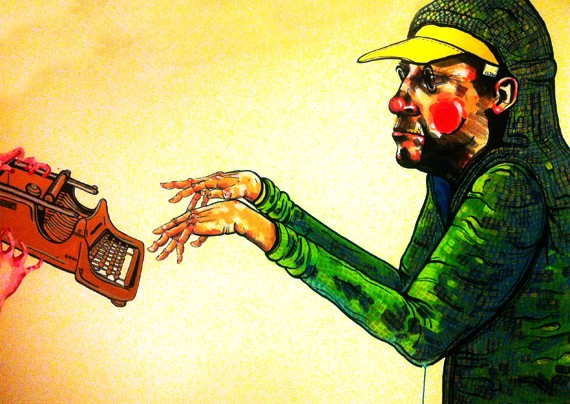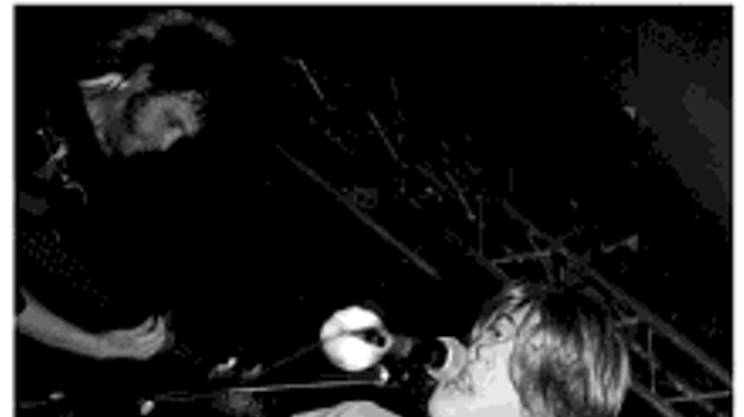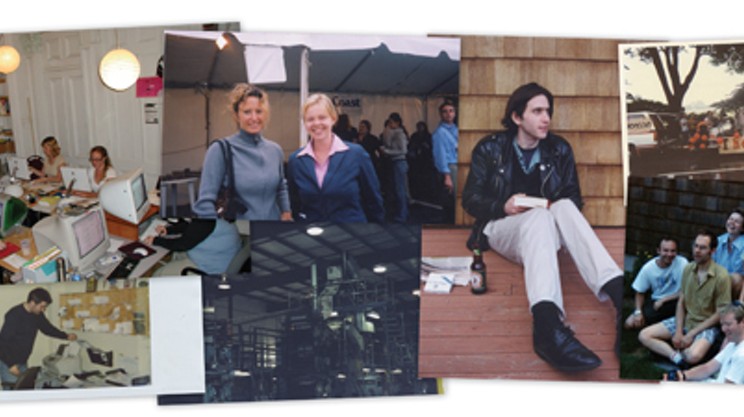This is a big week in The Coast’s world. On Wednesday, because of last year’s powerful feature “The always-on stalker,” the paper received an Excellence in Journalism award from the Canadian Journalism Foundation—a first not just for The Coast but for any media organization in Nova Scotia. Saturday, I’ll be speaking for The Coast on a panel about public service journalism at the Canadian Association of Journalists conference. And today, Thursday, marks The Coast’s 22nd birthday. If we didn’t have to put out next week’s issue, it would be a great time to retire.
Inspired by the birthday and the CJF honour, I went trawling through the decades of Coast back issues to make a list of stand-out stories, one per year. These aren’t necessarily the best or most important features we’ve published, but to me they give a good idea of the downs and ups of 22 years of publishing. And provide inspiration to go after the next big story in year 23 and beyond.
Volume 1, issue number 1
“Publishing johns’ names part 2,” by Debra, June 17, 1993
Sex worker Debra submitted her story for the debut issue, and the six of us starting The Coast promised—just like every newspaper we’d ever freelanced for or heard of—to send her a cheque for her fee within 30 days. But cash up front is how business was done in Debra’s world, so we broke from standard media practise and paid her. A good lesson that “doing things differently” can require actually doing things differently.
Volume 2, number 15
“Ill communication,” January 26, 1995
It was big news when a woman shot and wounded her roommate on Dalhousie’s campus, and we’d been handed a scoop: The would-be killed came to our office a few days earlier to drop off a diary/manuscript detailing life with her difficult roommate. Unfortunately our printer decided to censor the story, proving A.J. Liebling’s quote that “Freedom of the press is guaranteed only to those who own one.”
Volume 3, number 19
“When big isn’t big enough” by Jay Romkey, March 21, 1996
What began as a lighthearted look at the personalities in Halifax’s amateur bodybuilding scene evolved into an investigation of steroid dealing. And then Romkey got jumped by a couple of guys, earning a black eye and a warning to stop asking questions about steroids. A rare example of the sort of thing that’s always happening to reporters in movies.
Volume 4, number 19
“Discretion preferred” by Lex Gigeroff, March 27, 1997
The Maritime Film Classification Board’s decision to ban Anjelica Huston’s Bastard Out of Carolina adaptation came under withering scrutiny from Gigeroff, the local screenwriter who passed away in 2011. For those who dismiss The Coast as “an arts paper,” this was a watershed demonstration that typical “hard news” stories don’t have a monopoly on political import.
Volume 5, number 19
“Crack” by Jerry West, October 16, 1997
In one of our landmark successes in first-person immersion journalism, West doesn’t just talk to the police about how much crack costs, he takes the reader along as he buys some. This story foreshadowed Stephanie Domet’s sensational “Busted!” cover feature about trying to ban herself from the casino in volume 6.
Volume 6, number 3
“Abuse of power” by Kyle Shaw, June 25, 1998
You’ll have to excuse me putting my own writing on the list, because this story reminds me of the longest week in Coast history. It started with three rogue Halifax cops on a puritanical campaign to pressure our advertisers to stop supporting the paper because of “Savage Love,” and ended with me facing the three assholes in court to get an injunction against them.
Volume 7, number 34
“The last temptation of Jamie Britten” by Ara Finlayson & Brendan Murphy, February 3, 2000
June 1993, in the second issue of The Coast, the cover story looked at why rave culture “never really caught on here.” Once the party scene finally did arrive around the turn of the millennium, that issue became an inside joke about the risks of forecasting. But the joking stopped after Finlayson’s haunting piece about the 23-year-old who died of an overdose at what was the biggest rave ever held in Halifax.
Volume 8, number 28
“Miracle worker on Barrington St.” by Lynne Patterson, December 14, 2000
Kate Carmichael was head of the Downtown Halifax Business Commission. She was also dying of cancer. In Patterson’s sensitive portrait, Carmichael is working both to resuscitate Barrington Street and to die on her own terms, in acceptance of her mortality. As the ultimate gesture that Patterson had been true to her subject, The Coast cover photograph of Carmichael was displayed at her memorial service.
Volume 9, number 17
“Haligonian like me” by Omran Sheikh, September 27, 2001
The September 11 terrorist attacks triggered a wave of racism that quickly reached Halifax from Ground Zero. This was as unexpected as the dozens of commercial airplanes that were forced to land here when the world’s airspace was hastily closed to traffic, and much less welcome. From his picture on the cover to his personal writing in the feature, Sheikh bravely confronted the racism face on.
Volume 10, number 29
“Lighting up” by Carla Gillis, December 19, 2002
Her assignment was to write a puff piece about “Christmas crazies,” those people who go all out in Santa season to decorate their houses with lights. She turned in three tender profiles of intimate humanity that come to mind for me every December. If more reporters were as talented as Gillis, journalism would have its own adage like theatre: There are no small stories, just small writers.
Volume 11, number 18
“Motel hell” by Jane Kansas, October 2, 2003
Producing an issue in the aftermath of Hurricane Juan was an exciting race against the clock and the power outages, but Kansas’s obituary for the Esquire Motel’s sign feels timeless.
Volume 12, number 50
“Inside the box” by Lis van Berkel, May 12, 2005
Cities, and newspapers, like ours spent a lot of time talking about Wal-Mart, the epitome of the anti-local. Van Berkel did something about it: She got a job at the big-box store as an immersion journalism assignment. The resulting story was a revelatory look at the human price paid for low-cost retail.
Volume 13, number 24
“No place to go” by Lezlie Lowe, November 10, 2005
This in-depth examination of public toilet policy merited two different covers on one issue—half the copies were pink with a ladies’ room symbol, the other half blue.
Volume 14, number 18
“I was an internet addict” by Robert Plowman, September 28, 2006
Plowman goes offline for a month, uses the time to write a masterpiece about our relationship with information.
Volume 15, number 37
“Adam’s fall” by Matthieu Aikins, February 7, 2008
This multiple-award-winning piece about Adam Cashen’s suicide lead to the installation of the Macdonald bridge’s anti-jumping barriers.
Volume 16, number 29
“Rat city” by Lezlie Lowe, December 11, 2008
Readers still talk to me about the story that revealed politician Gloria McCluskey is someone you should call when a rat swims up your toilet.
Volume 17, number 2
“Who is premier Darrell Dexter?” by Stephen Kimber, June 4, 2009
This profile caused a sensation for publicly uttering the phrase “premier Darrell Dexter” in advance of the NDP’s breakthrough victory, but the more exciting breakthrough was that it earned Coast godfather Kimber his first Atlantic Journalism Award win.
Volume 18, number 5
“Sable Island’s cod killer” by Linda Pannozzo and Bruce Wark, July 1, 2010
A big reason you’ve never heard of a seal holocaust is Pannozzo and Wark’s thorough debunking of the government’s hysteria-driven culling plan.
Volume 19, number 38
“A trust betrayed: Peter Kelly and the estate of Mary Thibeault” by Tim Bousquet, February 16, 2012
The Michener Award-nominated investigation that pushed then-mayor Kelly out of office has got to be one of current mayor Mike Savage’s all-time faves.
Volume 20, number 51
“Laurie The Guy: King of karaoke” by Stephanie Johns and Allison Saunders, May 16, 2013
A touching portrait of the hardest-working man in Halifax show business—his punishing schedule needed two of The Coast’s hardest-working editors to report on it completely.
Volume 21, number 39
“Justine Colley holds court” by Adria Young, February 27, 2014
For a paper that isn’t known for sports coverage, we’ve done some excellent sports features over the years, such as Young’s take on Colley: The best basketball player the city has ever produced at the peak of her game.
Volume 22, number 18
“The always-on stalker” by Hilary Beaumont, October 2, 2014
The harrowing investigation of internet-enabled abuse won the Canadian Journalism Foundation’s award for Excellence in Journalism and changed the way Halifax police deal with cyberstalking victims.




















